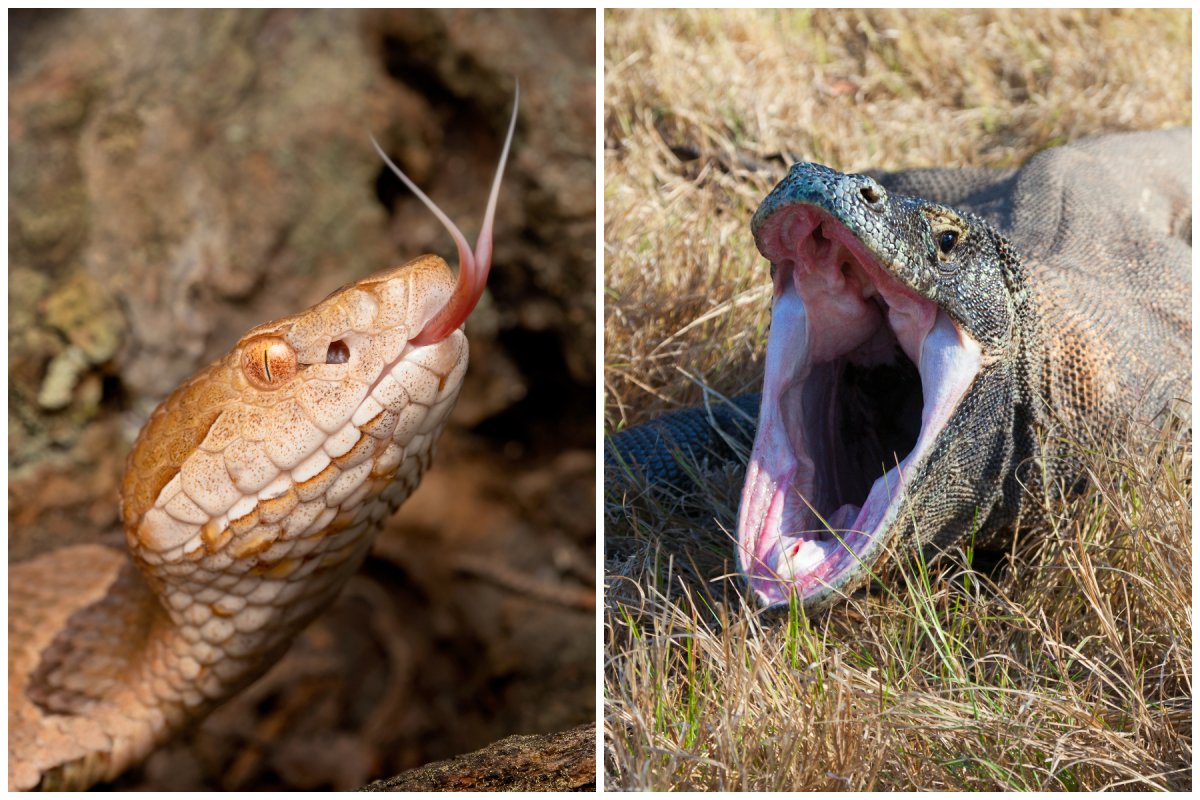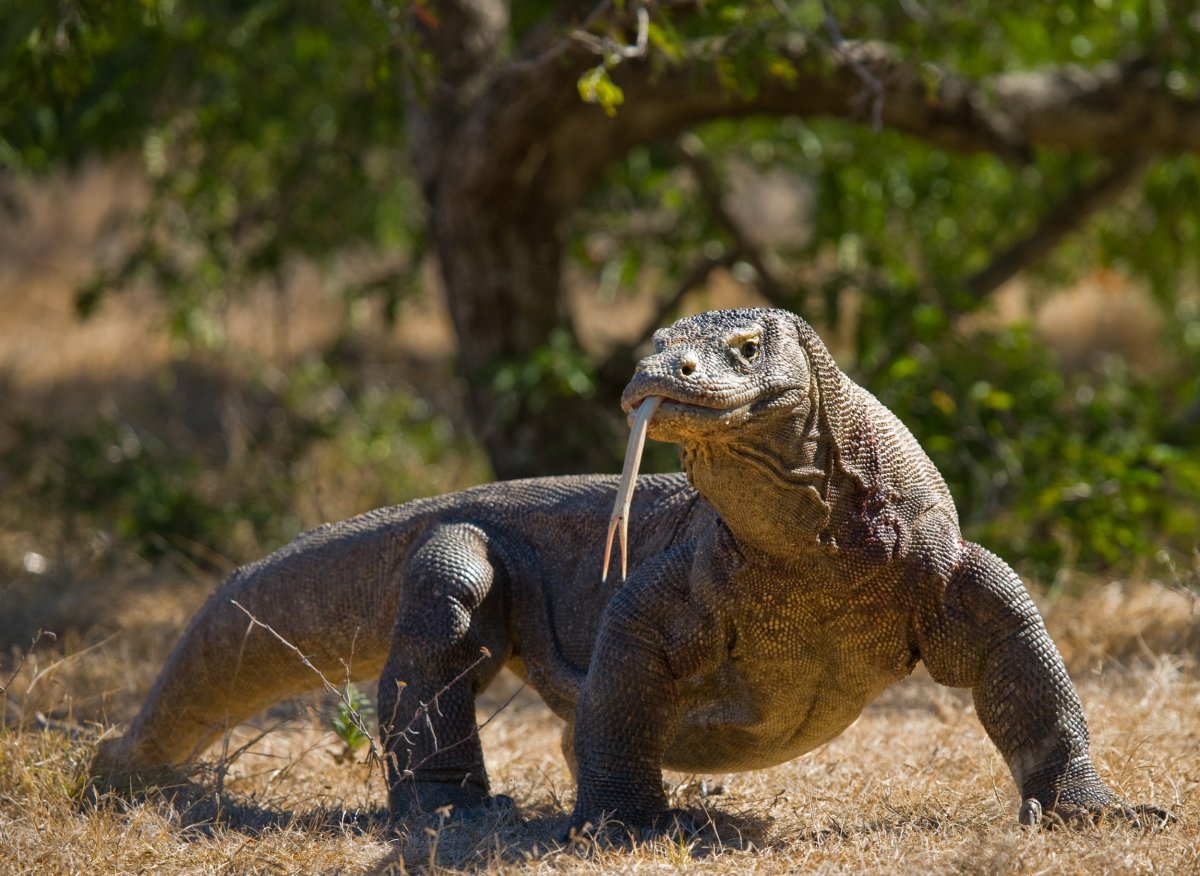Some lizards have evolved to be resistant to the venom of snakes, entering into a sort of evolutionary arms race with their limbless cousins.
A family of lizards known as varanids has evolved resistance to the venom of certain snakes called elapids, allowing them to survive bites. Strangely, however, in response, the snakes are evolving even more powerful venom, according to a new paper in the International Journal of Molecular Sciences.
"Our research found most large varanids or monitor lizards that prey on venomous snakes have inherited neurotoxin resistance—a trait possibly connected to their predatory lifestyle," study co-author Bryan Fry, a professor at the University of Queensland, Australia, said in a statement.

Some of these lizards—which include a range of shapes and sizes, from Komodo dragons to goannas—prey upon the venomous snakes—which include death adders, western brown snakes and cobras—while others are so small that they're at risk of being eaten by the snakes.
In the study, the researchers investigated how these lizards have evolved to resist the venom of the snakes. The venom of these elapid snakes includes neurotoxins, which are chemicals that disrupt nerve signal transmission by blocking the chemical receptors on muscle fibers, preventing them from contracting, which results in paralysis and potentially death.
The researchers describe how they applied snake venom to tiny slivers of lizard tissue, taken from various dead lizards in museum collections across Australia.
"We modeled a natural snakebite interaction on varanid lizards by applying venoms to a specific receptor site that we know is targeted by the venom," Fry said. "Evolution has equipped these giant lizards with the ability to combat venoms, but not all shield themselves in the same way."
"Having direct access to tissue collections was efficient and ethical since it saved us from spending large amounts of time and money to capture animals in the wild," Fry said.

Many species of varanid were found to survive the venomous bites of these snakes using chemical resistance, thanks to mutations in the receptor molecules that bind to the venoms.
They also discovered that, strangely, two groups of large-bodied varanid lizards, which included Komodo dragons and a species called perenties, resisted the snake venom using their skin rather than using chemical defenses.
"Their thick, bone-filled scales are enough to protect them against snakebite, while their large teeth are used to quickly dismember the fettuccini-like snakes," Fry said. "This discovery indicates that size and mechanical defenses may reduce the need for chemical resistance—in essence, evolution has favored brawn over biochemistry."

Smaller lizards, such as tree monitor lizards, had even lost any form of resistance after moving up into trees and away from the venomous snakes, with others subsequently regaining resistance after evolving to become burrowing species.
The researchers also found that in response to the lizards' evolving resistance, the snakes themselves were evolving more powerful venom to overcome this resistance.
"This complex dance of adaptation has resulted in a Russian doll-like nesting of gains and losses over time and suggests that the evolutionary battle doesn't always head in one direction," study co-author Uthpala Chandrasekara, a Ph.D. student at the University of Queensland, said in the statement.
"Australian snakes have developed potent venoms to counteract the lizards' defenses, highlighting an intense predator-prey dynamic. Once the lizards evolve, the snakes fire back with even more potent toxins. It's a biological arms race where the only constant is change," Chandrasekara said.
"Moving forward, we plan on looking at related giant lizards in Africa and Asia to expand our insights into these fascinating animals."
Do you have a tip on a science story that Newsweek should be covering? Do you have a question about snake venom? Let us know via science@newsweek.com.
Uncommon Knowledge
Newsweek is committed to challenging conventional wisdom and finding connections in the search for common ground.
Newsweek is committed to challenging conventional wisdom and finding connections in the search for common ground.
About the writer
Jess Thomson is a Newsweek Science Reporter based in London UK. Her focus is reporting on science, technology and healthcare. ... Read more
To read how Newsweek uses AI as a newsroom tool, Click here.






